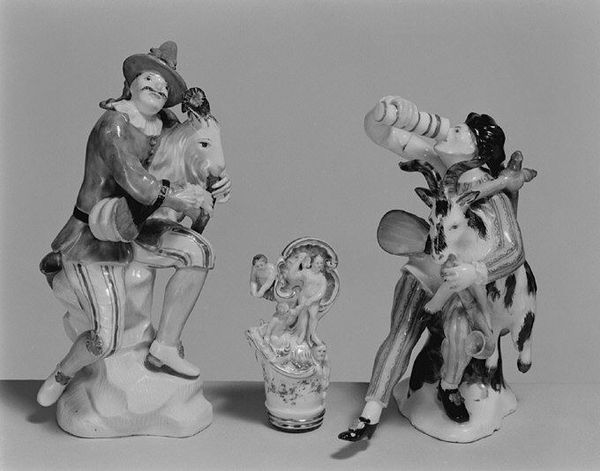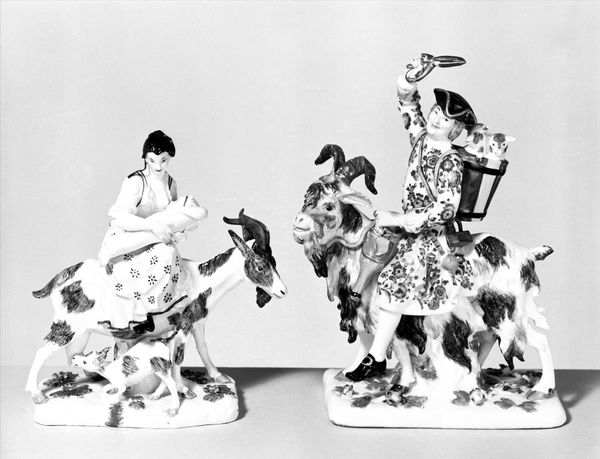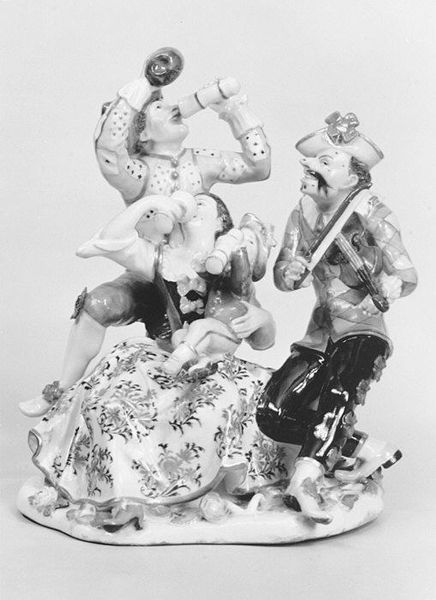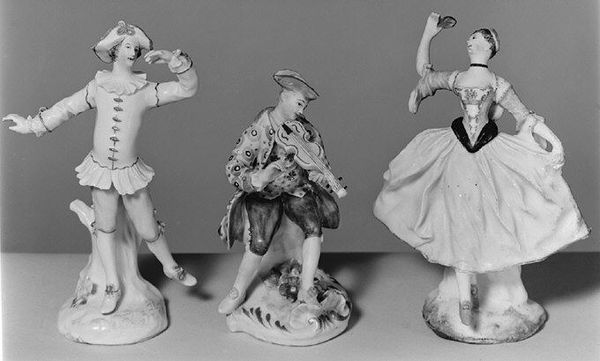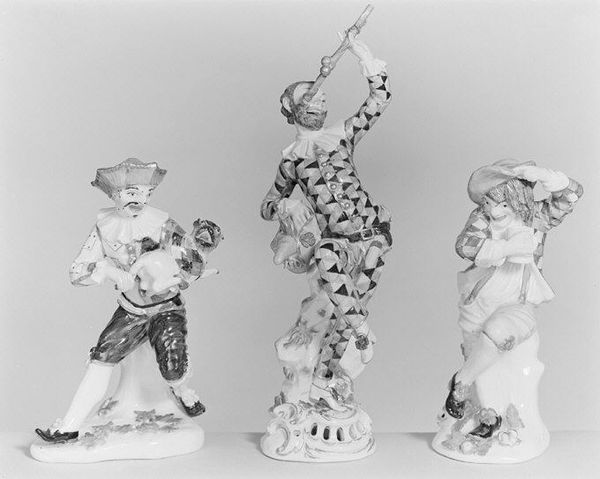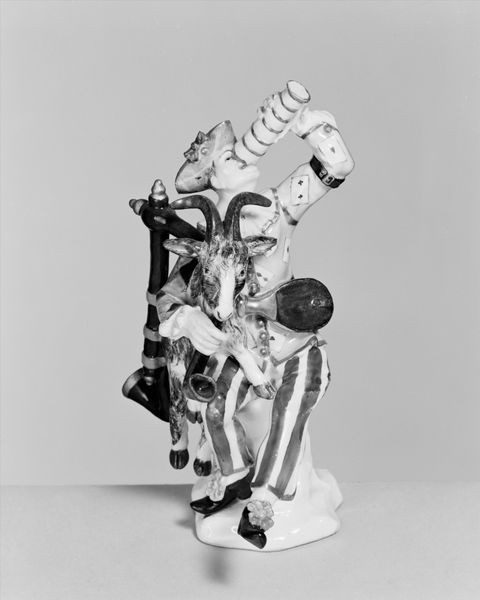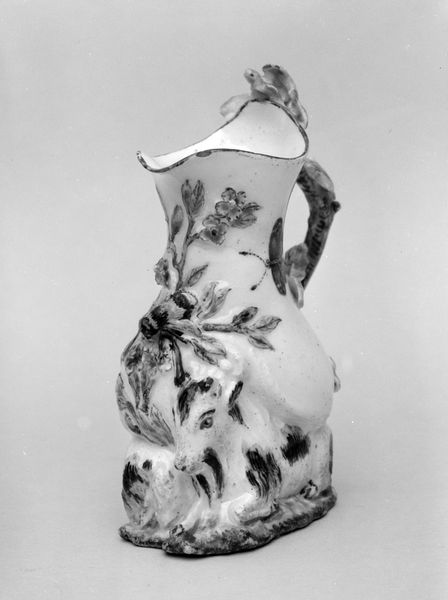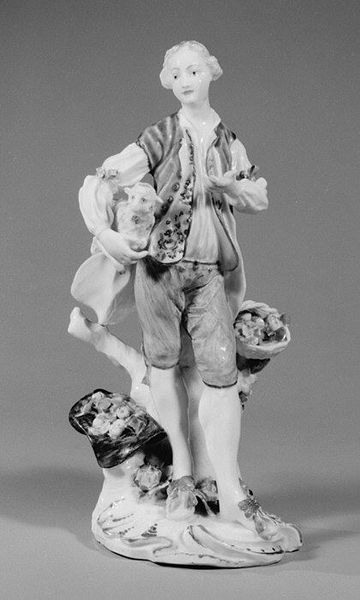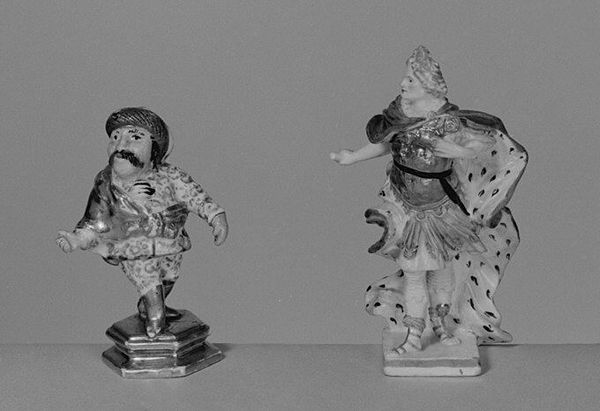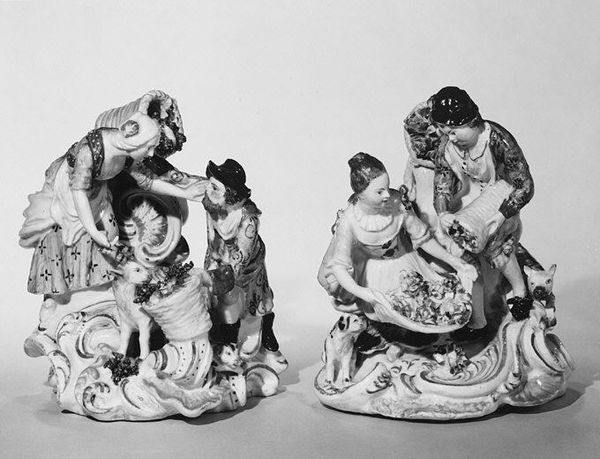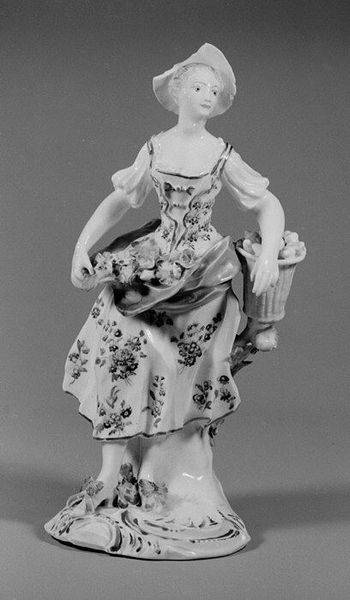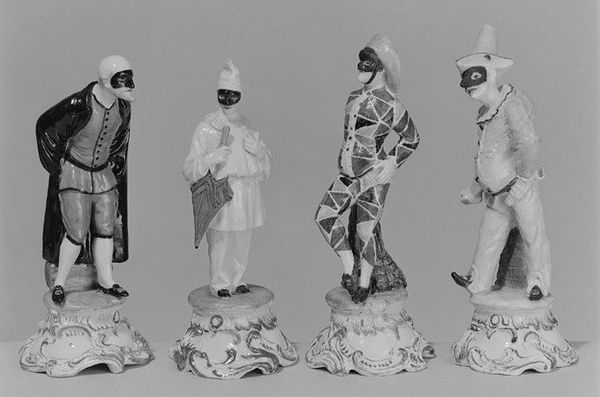
ceramic, porcelain, sculpture
#
sculpture
#
ceramic
#
porcelain
#
structure design
#
figuration
#
sculpture
#
genre-painting
#
decorative-art
#
rococo
Dimensions: Height: 5 7/8 in. (14.9 cm)
Copyright: Public Domain
Curator: This playful sculpture, “Harlequin,” was created by the Meissen Manufactory between 1725 and 1737. The figures are rendered in porcelain—such a delicate, almost ethereal medium for such boisterous characters! Editor: My first thought is how frozen they are, yet brimming with silent potential for mischievous, exaggerated motion. The material gives these figures such weightless, glossy drama. It is very interesting. Curator: Indeed. Harlequin is a classic character from the Commedia dell'arte. And what we see reflected in these sculptures is that peculiar blend of high art and popular entertainment that characterized much of the Rococo aesthetic. The diamond pattern—that immediately denotes Harlequin's persona, his quicksilver adaptability, his trickster spirit. Editor: And even now that lozenge design shouts "performance", wouldn't you agree? Its origins surely predate theatre but became intrinsically tied to it with pieces like this one. You find the pattern not just on clothing, of course, but echoing in stained glass, paving. Curator: Precisely! And within that context, porcelain adds an element. This wasn’t everyday stuff! Meissen was at the forefront of European porcelain production. They’re imbuing a common trope with prestige. Do you find a contrast in the light of this detail, almost ironic. Editor: It amplifies their archetypal nature! In theatre, repetition establishes motif and therefore expectation. And that high polish serves to immortalize something fleeting - an instant of humor becomes an echo across ages! These are not momentary clowns. It captures an idealized sense of clown. A timeless one! Curator: That interplay is truly captivating. It feels more poignant with your words to this performance. It reminds me that humor holds such power. What else lingers with you after spending time here? Editor: Beyond all its theatre references and cultural ties, it seems like the artists are almost saying to the audience: “Let’s not forget how connected the human experience is. Don’t take your feelings too seriously!” The symbolism goes well beyond art alone.
Comments
No comments
Be the first to comment and join the conversation on the ultimate creative platform.
